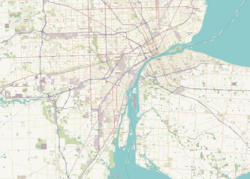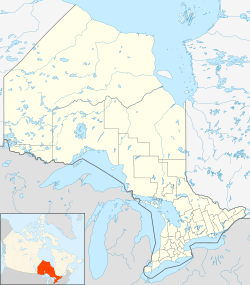Fighting Island facts for kids
| Geography | |
|---|---|
| Location | Detroit River |
| Coordinates | 42°13′18″N 83°07′12″W / 42.22167°N 83.12000°W |
| Area | 6.06 km2 (2.34 sq mi) |
| Highest elevation | 174 m (571 ft) |
| Administration | |
|
Canada
|
|
| Territory | Ontario |
| County | Essex |
| City | LaSalle |
| Demographics | |
| Population | 1 (permanent) |
Fighting Island is a cool island located in the Detroit River. It's about 606 hectares (or 1,500 acres) in size. This makes it the biggest Canadian island in the river!
Fighting Island is part of LaSalle, Ontario, in Canada. It sits across from Wyandotte, Michigan, and is downriver from big cities like Detroit, Michigan, and Windsor, Ontario.
Contents
Island History: From Ancient Times to Today
Early Inhabitants and Naming the Island
Long ago, Indigenous peoples lived on Fighting Island. Later, in the 1700s, French settlers also made their homes there. Over time, the island has had many different owners.
The island got its interesting name in 1810. This was because people found old artifacts left by Indigenous peoples on the island. These artifacts suggested that battles might have happened there.
A Brief Skirmish in 1838
Fighting Island was also the site of a small fight. This happened on February 24 and 25, 1838. It was part of a bigger event called the Patriot War and the Battle of Windsor.
Industrial Use and Environmental Cleanup
In 1918, a man named John B. Ford bought the island. His company, Michigan Alkali Company, used the island to dump waste. This waste came from making products like soda ash and baking soda.
Over the years, a huge amount of waste was placed on the island. This waste was very high in pH, meaning it was very alkaline.
Later, Michigan Alkali Company became Wyandotte Chemicals Corporation. Then, a company called BASF bought it. BASF now owns Fighting Island.
BASF started a big project to clean up the island. They successfully removed the waste and worked to bring back the island's natural environment. Today, BASF runs a special program on the island. This program teaches students from elementary and high schools about biology and ecology. It helps them learn about nature and how to protect it.



